Key points
– It’s likely that the RBA’s cash rate has peaked with numerous indicators pointing to slower economic growth and inflationary pressures easing.
– While the risk in the short term is still on the upside for rates or a delay to the start of rate cuts, our base case is that rates will be on hold until early next year ahead of rate cuts starting in the March quarter.
– Rate cuts through next year should help growth to stabilise and pick up from late 2024.
Introduction
At its September meeting the RBA left the cash rate on hold for the third meeting in a row at 4.1%. The pause in interest rates over the last three months comes after the biggest interest rate hiking cycle (of 400 basis points over 14 months) since the late 1980s. (While the 1988-89 rate hiking cycle was nearly double that seen since May last year, back then household debt to income ratios were about one third of current levels.)
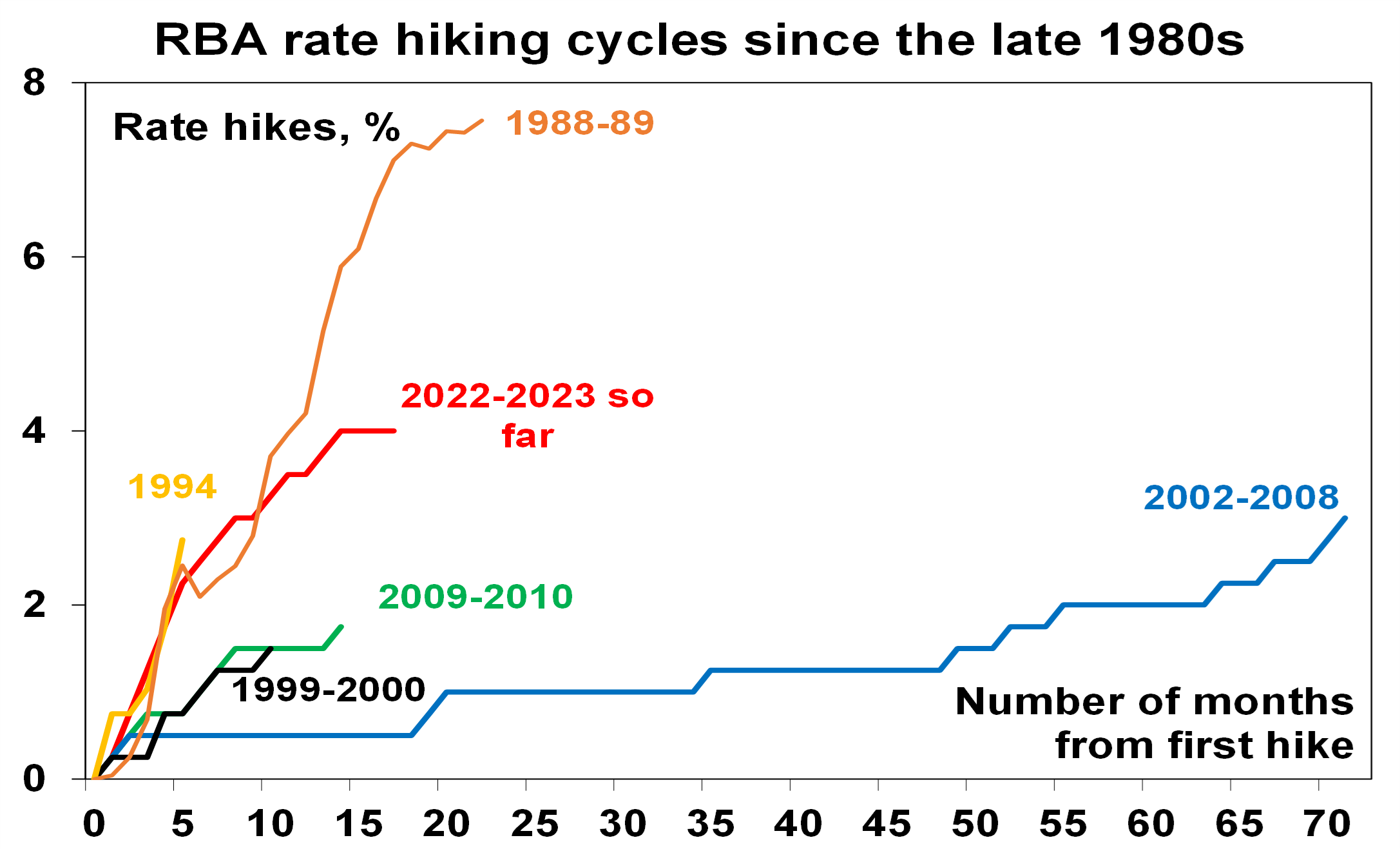
Source: RBA, AMP
This took the cash rate to 2012 levels and similarly for mortgage rates.
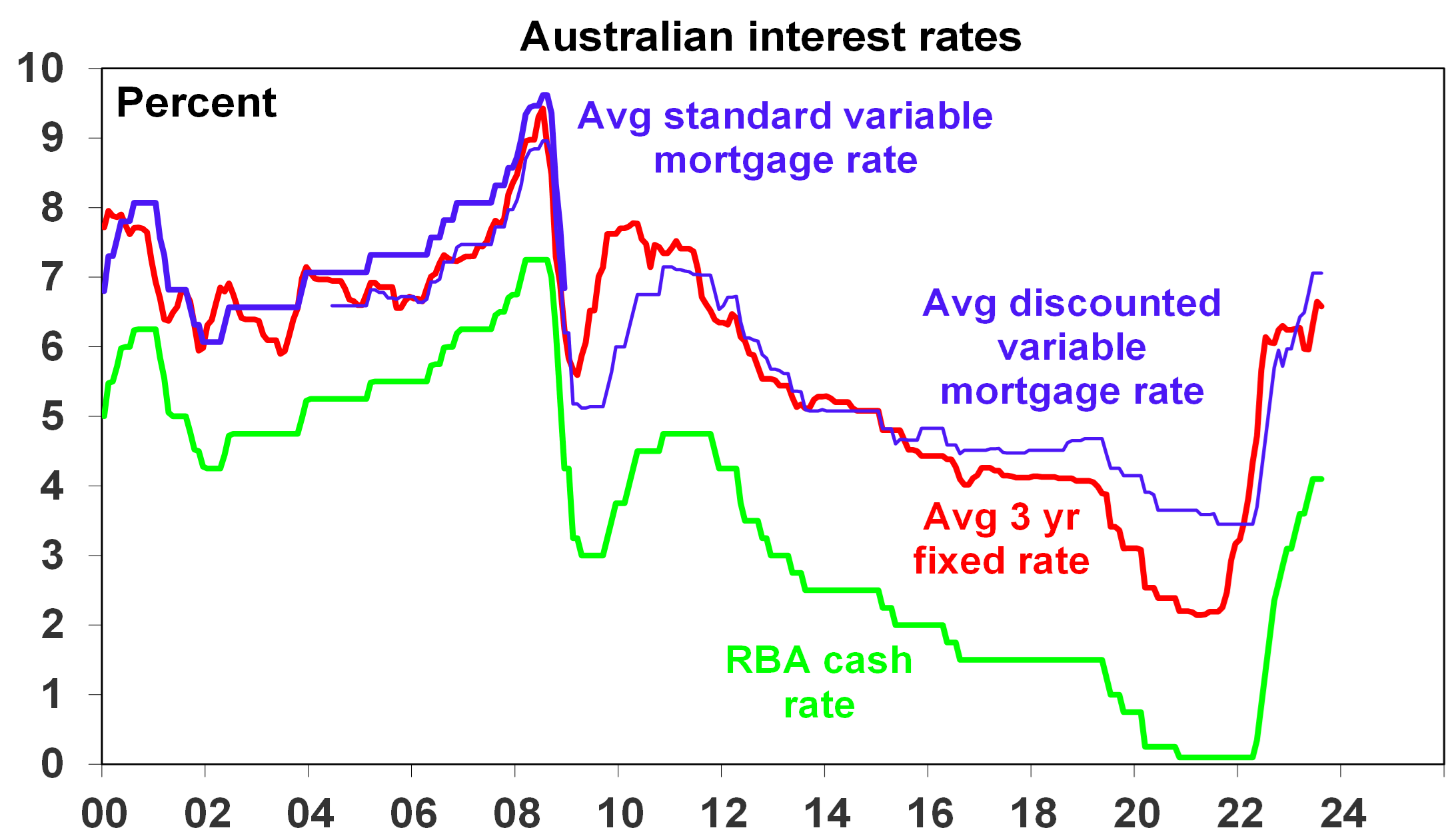
Source: RBA, AMP
In leaving the cash rate on hold the RBA reiterated that interest rates have already been increased by 4%, higher rates are working to establish a “more sustainable balance between supply and demand”, uncertainty remains high and staying on hold provides further time to assess the outlook. The RBA also noted again that recent data is consistent with inflation returning to target in late 2025. So have we reached the peak in the cash rate? And what does this mean for the economy?
The case for the peak in rates
We were way too optimistic as to how far the RBA would raise the cash rate, but our view remains that the RBA has done more than enough to bring inflation back to target and so we are likely at the peak.
First, rate hikes impact the economy with a lag of a year or more. This is because it takes a while for the hikes to be passed through to borrowers and for them to adjust their spending and for this to impact companies and jobs. This time around the lag has likely been lengthened by savings buffers built up in the pandemic, the reopening boost, more than normal home borrowers locking in at 2% or so fixed mortgage rates in the pandemic and the highly competitive mortgage market which has meant that actual mortgage rates paid on outstanding mortgages have gone up by less than the cash rate. However, these protections are now wearing off.
The rate hikes since April last year mean that a variable rate borrower with a $600,000 mortgage will have seen around $1300 a month added to their mortgage payments. That’s an extra $15,700 a year. Even if the borrower has managed to get a 0.5% discount to their mortgage rate it would amount to an extra $13,300. Many of those on fixed rates are now starting to experience an even bigger increase (because fixed rates in 2020-21 fell to much lower levels than variable rates) in one jump. This has already seen housing debt interest payments as a share of household disposable income double from their lows. Once the rate hikes fully flow through it will likely go to a record high. This is a very big hit to household spending power.
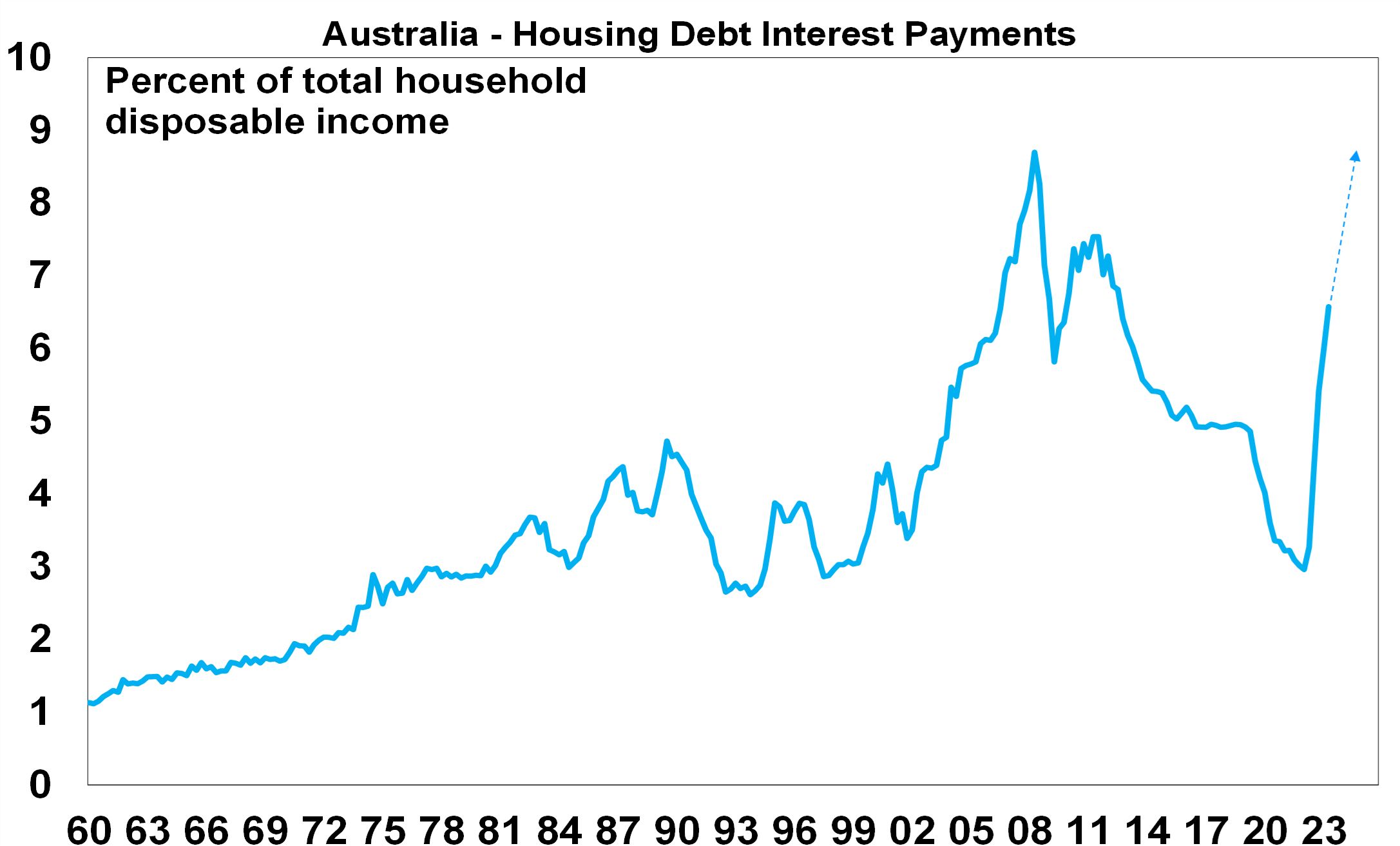
Source: ABS, RBA, AMP
Secondly, we are now seeing increasing evidence that rate hikes are biting:
- Real retail sales have fallen for three quarters in a row and are very weak on a per capita basis, ie adjusting for population growth.
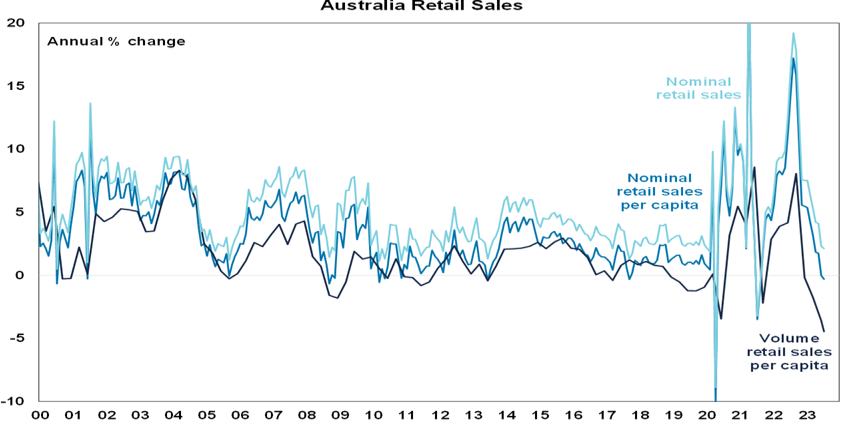
Source: Macrobond, AMP
- The ABS’ Household Spending Indicator suggests annual growth in nominal consumer spending has gone negative this quarter which suggests weakness in both goods and services.
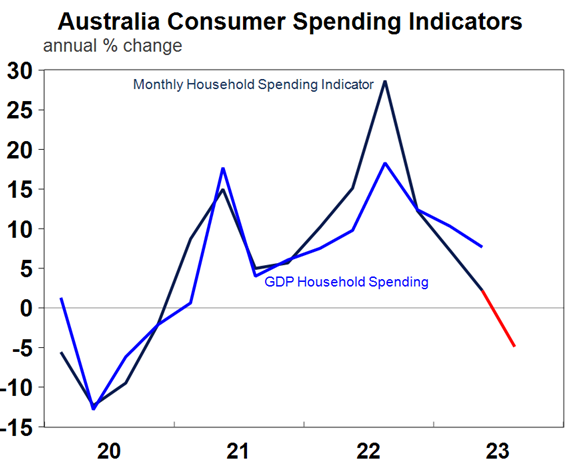
Red portion of the ABS’ Household Spending Indicator line assumes spending remains at July level for August and September. Source: ABS, AMP
- A sharp slump in building approvals points to weak in-home building.
- Business investment plans as surveyed by the ABS for the current financial year are only up 7.1% on the same estimate made for the last financial year pointing to a deceleration in growth from the 15.9% rise seen in 2022-23. This is in nominal terms so the slowdown after allowing for inflation will be greater.
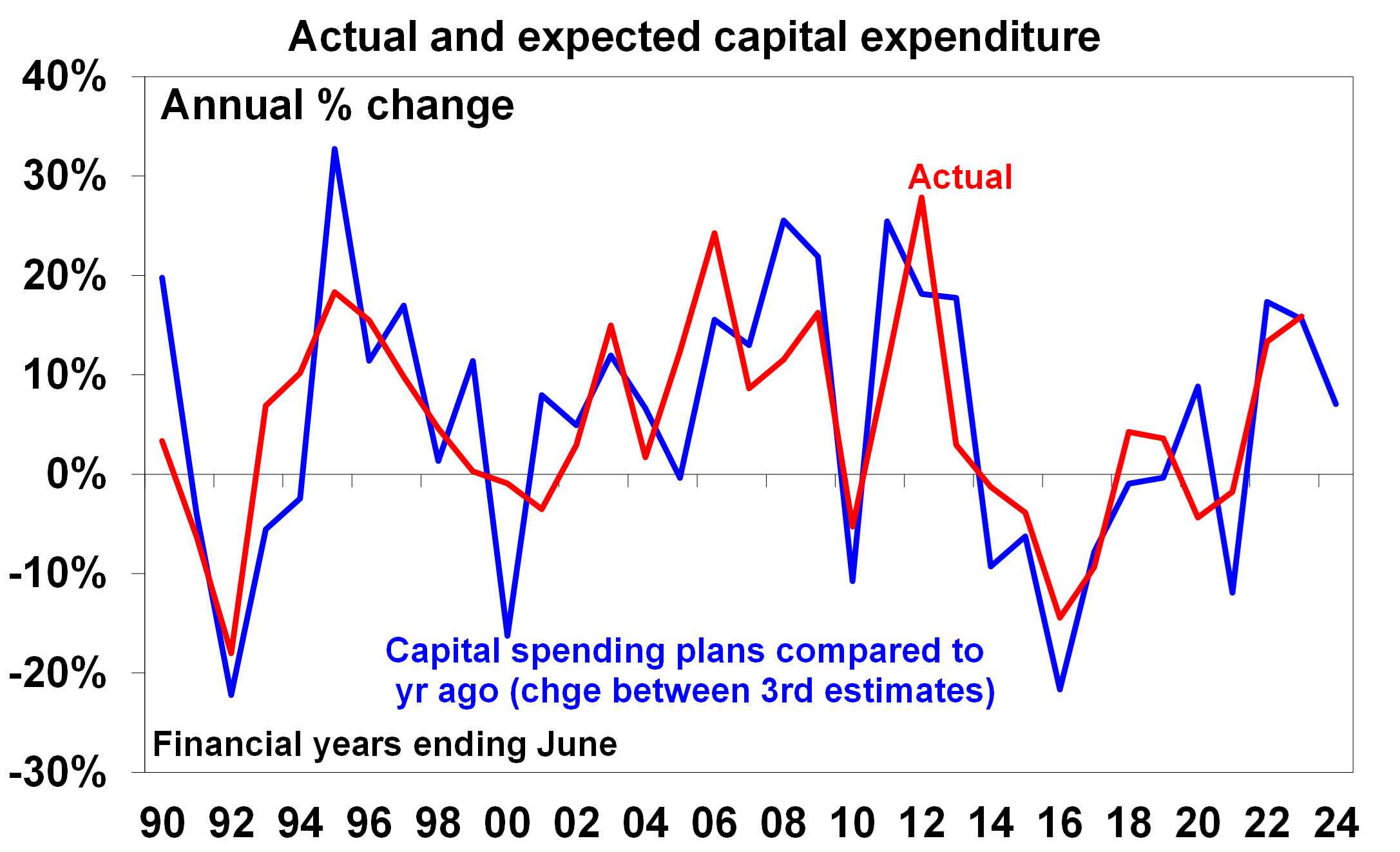
Source: ABS, AMP
- GDP growth has slowed to a 1.6% pace in the last two quarters.
- Labour market indicators including job vacancies and hiring plans in surveys have started to cool and unemployment looks to have bottomed at 3.4% late last year.
- The June half profit reporting season saw less companies than normal report profits up on a year ago and far less than normal raise their dividends, suggesting a degree of caution.
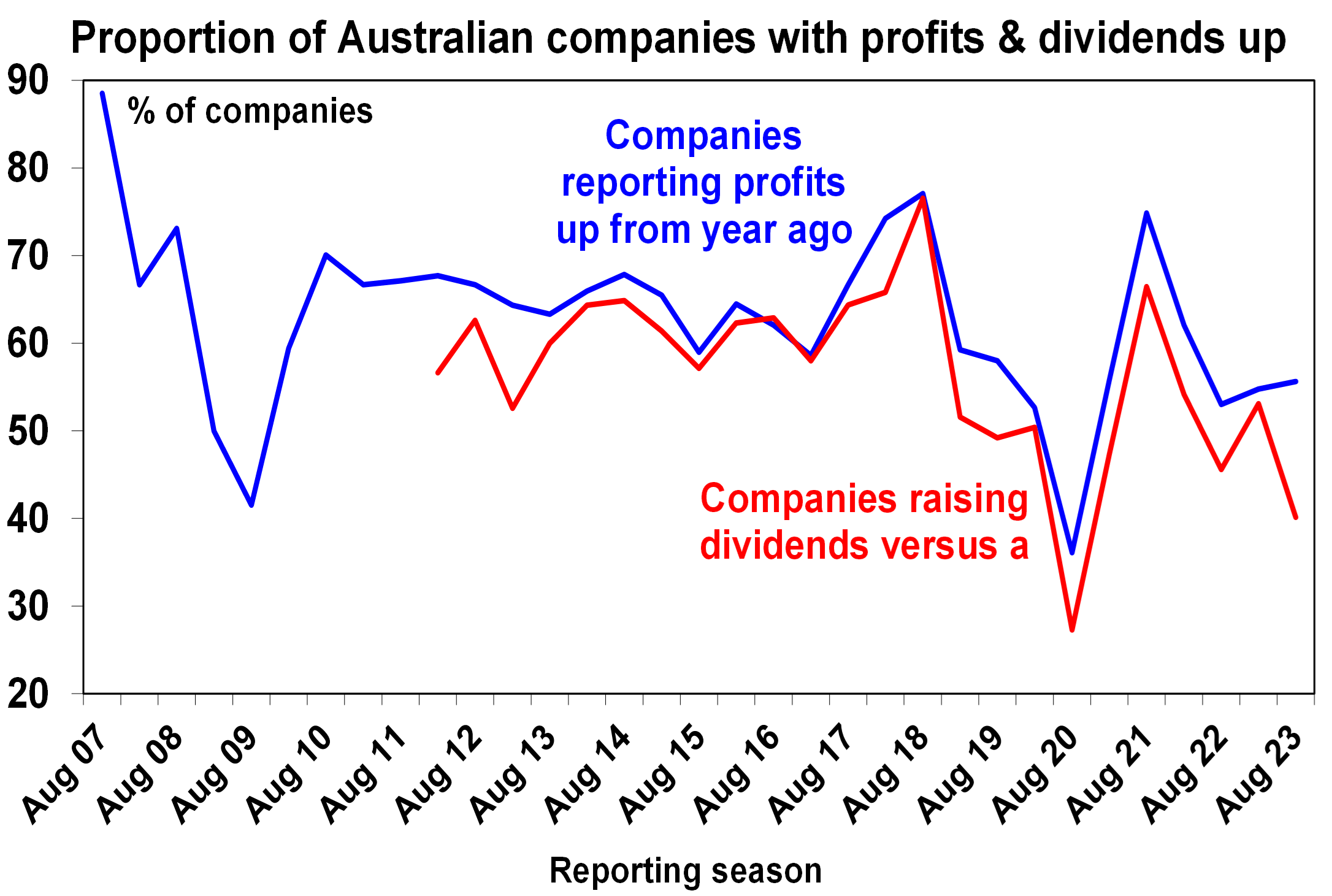
Source: AMP
Finally, while our Australian Inflation Indicator has picked up a bit with higher labour and raw material costs it continues to point to a further rapid fall in inflation.
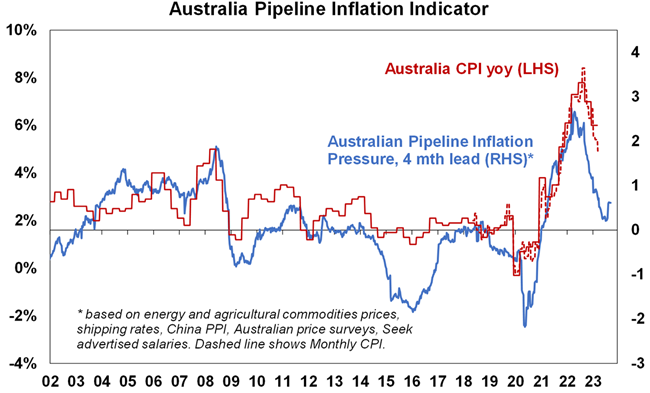
Source: Bloomberg, AMP
Continuing to raise interest rates will only add to the already very high risk (at around 50%) of recession. At the very least the economy is likely to have slowed substantially by late this year with unemployment starting to rise faster than the RBA is allowing for. This will likely see inflation fall next year faster than the RBA expects. As a result, our base case is that the cash rate has peaked ahead of rate cuts starting in the March quarter next year which should help growth then stabilise and improve later next year.
Short term risks for rates are still on the upside though
In the short term, the risks are still skewed to a further increase in interest rates and or a delay in the start of rate cuts as: inflation is still too high; the labour market remains tight with upwards risks to wages flowing from higher minimum and award wage rises; productivity growth is very weak; and the rebound in home prices is partly offsetting the tightening impact of higher interest rates. Consistent with this the RBA retained its guidance that some further rate hikes may be required. Key to watch will be the global economy, household spending, inflation and the labour market.
While the near-term risks for interest rates are still on the upside those risks have declined though. Absent much stronger wages growth, a further drop in unemployment and/or a reversal of the downtrend in inflation, the RBA is expected to leave interest rates on hold for the rest of this year ahead of rate cuts next year. We are allowing for four rate cuts through 2024 as the economy and inflation slow further.
So soon-to-be Governor Bullock should get an easier run than Governor Lowe. Her main challenge may be trying to turn the economy back up.
What you need to know
While every care has been taken in the preparation of this article, neither National Mutual Funds Management Ltd (ABN 32 006 787 720, AFSL 234652) (NMFM), AMP Limited ABN 49 079 354 519 nor any other member of the AMP Group (AMP) makes any representations or warranties as to the accuracy or completeness of any statement in it including, without limitation, any forecasts. Past performance is not a reliable indicator of future performance. This document has been prepared for the purpose of providing general information, without taking account of any particular investor’s objectives, financial situation or needs. An investor should, before making any investment decisions, consider the appropriateness of the information in this document, and seek professional advice, having regard to the investor’s objectives, financial situation and needs. This article is solely for the use of the party to whom it is provided and must not be provided to any other person or entity without the express written consent AMP. This article is not intended for distribution or use in any jurisdiction where it would be contrary to applicable laws, regulations or directives and does not constitute a recommendation, offer, solicitation or invitation to invest.
The information on this page was current on the date the page was published. For up-to-date information, we refer you to the relevant product disclosure statement, target market determination and product updates available at amp.com.au.





